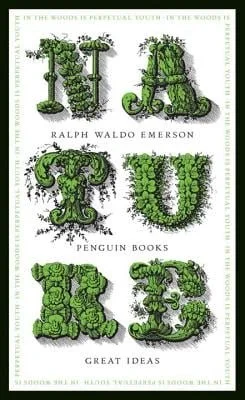June 2025: The Natural World, Seasons, and True Natures
Happy June, Happy Pride, Happy summer, Galaxy!
Today is June 3rd, and there was a rip-current advisory for Lake Michigan, with a warning for high waves, and, typical Anna, I threw my swimsuit in my tote bag as I walked to work. Just in case. Please note: I don’t recommend swimming in waters with rip currents, but I do love huge waves crashing on me (I got to experience that in Matala a few months ago…). And more than that, I love the energy of early summer, where we are all finally ready to slip on a pair of shorts (check), walk around in sandals (check), sip iced coffees (literally doing that at this very moment), and enjoy the change of seasons.
Sometimes spring feels like a teenage boy who just doused himself in Axe body spray: fragrant, and not necessarily in a subtle way. Blooms absolutely everywhere. Baby bunnies eating up all of our early garden plants. Birds nesting and incubating eggs. This tree, which I drive by most days, was absolutely covered in blooms in a way that just seemed to say “I have no chill” and it actually made me giggle when I drove past it. It’s still a little silly looking, but the leaves lend it a bit more gravitas.
As I chose the theme of the studio this month, the natural world, I was thinking about how we finally have the chance to be in and with nature, once the cold clears in the Midwest, but then I went on to amend that: the nature that we get in early spring is so much different than the nature we get in late fall. And there is nature that takes us through the winter season that is also breathtaking.
And this tree with no chill, that starts out absolutely throwing blooms in every direction isn’t going to look the same when September rolls around, and it certainly won’t look the same 10 Septembers hence.
The seeds that I used to start with my 4-year-old son, indoors on our windowsill in our little old lady Chicago 3-flat, sometimes grew into sunflowers that reached beyond the roof of our garage. And my 4-year-old son is now my almost 17-year-old son, who similarly towers over me.
And damn, did that ever get me thinking about getting older.
But honestly, what doesn’t get me thinking about getting older? Because I’m definitely doing just that. And some days, like today, I’m counting down the days until I can officially call myself a crone (about 730), and some days I’m wondering who the fuck is looking back at me when I glance up at my mirror.
And I’m certainly wondering if I should be a part of this yoga club when I look at Instagram, because no one really looks like me on there, either.
And I’m wondering so many things about my physical self, like why my ears currently don’t like me to go upside down when it’s pretty much my favorite thing, and why I don’t really sleep soundly anymore, and why I don’t seem to be able to regulate my body temperature.
And mostly the answer to that last paragraph is: perimenopause. But bigger questions linger.
Like, who am I? What makes me, me? We’re talking about nature this month, in the way of trees, birds, and bunnies, but also, what is my true nature?
The Yoga Sutras talk about that in Book 1, Sutra 3 - through the practice of yoga (which is the cessation of the mental fluctuations), the self then abides in its true nature.
Which is funny, because the word for nature in Sanskrit is Prakriti, which, in the yoga sutras, is the ephemeral and changeable self - the eternal self is represented by the word Purusa.
And what we discover when we dive into yoga philosophy is that the answer to “who am I” is sometimes going to change - from year to year, and from season to season, and likely from lifetime to lifetime. And our dharma changes, depending on which stage we’re in.
When we’re young, we’re in the stage of Brahmacharya, marked by intense study, traditionally under a guru. Then we progress to the stage of the Grihastha, or Householder, where we attend to our families and businesses. Then we get to the phase I am anxiously awaiting: the forest walker phase, Vanaprastha. Here, we hand over day to day tasks to the next generation, assume more of an advisory role, and turn our efforts to the task of Moksha, or liberation. Then we reach the phase of the Sannyasin, where we gradually withdraw into an acetic existence, fully focused on the task at hand of liberation.
And although our lives look different in each of those phases, I think we can catch the thread of who we are, and let it carry us through - our Sva-Dharma: our personal purpose here on earth. Like the sunflower, we start out by gathering the energy necessary to bust out of our seed casing, and tunnel up from the earth. Then we work on sending strong enough roots into the the earth so that we can grow, grow, grow. Then we create: we make seeds that will propagate a little of who we are out into the world and carry it on. Then we get a little lower and slower and wrinklier and we get to look around and see all the beauty we had a hand in creating.
Then we let go.
And maybe part of what feels so hard is that so much of our modern life, our lives on social platforms, is about denying that we age. So much around us is telling us not to let go. We hang on to the things that we’ll never be able to keep grasping, and we lose the thread of who we really are.
But look at nature all around us: it embraces the stages! Through all of these seasons, the sunflower is still doing its sunflower dharma. It’s allowing how that dharma looks to be in flux, from seed to shoot to flower to compost. Prakriti for the sunflower is the stage it happens to be in - true to that moment, but not true forever. Purusa for the sunflower is that, through it all, it’s still a sunflower.
Margaret Atwood says, in her poem “Shapechangers in Winter:”
But that trick is just to hold on
through all appearances; and so we do,
and yes, I know it’s you;
and that is what we will come to, sooner
or later, when it’s even darker
than It is now, when the snow is colder,
when it’s darkest and coldest
and candles are no longer any use to us
and the visibility is zero: Yes.
It’s still you. It’s still you.
One time, as a young 20-something, I went out for drinks with what I can only term my high school frenemy. We were theatre kids, and we were always rivals for starring roles in plays, boys, solos in choir, everything. And we sort of liked each other, but we sort of didn’t. We talked that night about what was happening in our early 20-something lives, and what we were like in high school (yikes), and I said to her, “Do I seem the same?” And she said, “Actually, you do. You’re shy and seem a little stuck up because of that, but then once you get to know you, you’re surprisingly goofy and warm, with a big heart and a big smile.” That stuck with me, because although there might have been a lot of things I desperately wanted to be - mysterious, artsy, devastatingly beautiful come to mind - what I was wasn’t so bad: surprisingly goofy and warm. I’ll take it.
The Bhagavad Gita says: “It is better to do one’s dharma imperfectly, than to do another’s dharma perfectly.”
I think I’ll be goofy, big-smiling, warm-hearted Anna, through all phases, as imperfectly as I might show up sometimes. And although it sometimes hurts to let go of who and what younger Anna was and all the handstanding she could do, I’m embracing the process of becoming goofy, warm-hearted forest walker crone Anna.
Who are you?
What I’m Reading…
My friends Kelly and Marc wrote a song called “Eduardo,” and one of my favorite lines from it is: “We’d walk around the woods and get all transcendental,” and maybe we should all try for that this month! If you’re intrigued, start with reading “Nature” by Ralph Waldo Emerson. It’s a basic outlay of Transcendental philosophy, which suggests that the divine suffuses nature, that we can understand the nature of reality by being in and studying nature, and that we should strive to live in harmony with nature, rather than domesticate it.




